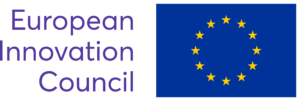NanoXCAN is a cooperation of the University of Lisbon with Leibniz University and other partners in France, Switzerland and the Czech Republic.
The European Commission is funding the NanoXCAN research project with around four million euros until the end of April 2026 as part of its Horizon programme.
The goal is to develop a revolutionary, compact X-ray microscope that will make it possible for the first time to directly image viruses and viral structures.
The characterisation of viral structures, as well as the identification of key proteins in the infection cycle, are crucial for the development of treatments against viral diseases. The Corona pandemic has shown that rapid and reliable identification of viral subtypes can save lives. However, imaging of individual viruses is only possible at a few specialised centres in Europe. The devices used are huge, cost several billion euros and require a lot of staff to operate.
In the NanoXCAN project, researchers are now combining several cutting-edge scientific approaches to create a new technology that will change the way viral diseases are researched in the long term. Every hospital could benefit. “If we can in the lab only come close to the performance of the huge devices used so far, it will be a blueprint for smaller installations in hospitals,” explains Professor Milutin Kovacev, coordinator of the project at Leibniz University.
The project is embedded in the research activities of the Hanover-based Cluster of Excellence PhoenixD, which is developing precision optics of the future. NanoXCAN merges scientific achievements for which, among others, the Nobel Prize in Physics was awarded in 2018 – ultrafast fibre lasers and the concept of diffractive imaging – and combines them with artificial intelligence methods. The researchers want to create an extremely small, punctual and ultra-intense laser source for hard X-rays that penetrates matter more strongly. This should significantly improve imaging and spatial coherence while at the same time greatly reducing the size of the device. The possibility of taking serial images also allows to follow developments over time.
Prof. Milutin Kovacev: “With this new technology, even small laboratories and companies can determine structures in the nanometre range quickly, reliably and non-destructively. This opens up a wide field of possible applications not only in the field of medicine, but also for the development of novel nanostructures in materials science or in industrial quality control.” To support the transfer from research to application, industrial partners are also part of the project team.
The NanoXCAN project is coordinated at the Instituto Superior Técnico of the University of Lisbon. In addition to Leibniz Universität, the Hannover Medical School is also involved, as well as the École polytechnique near Paris, and the companies Arcoptix (Switzerland) Rigaku Innovative Technologies (Czech Republic) and Naneo Precision IBS Coatings (Lindau).



